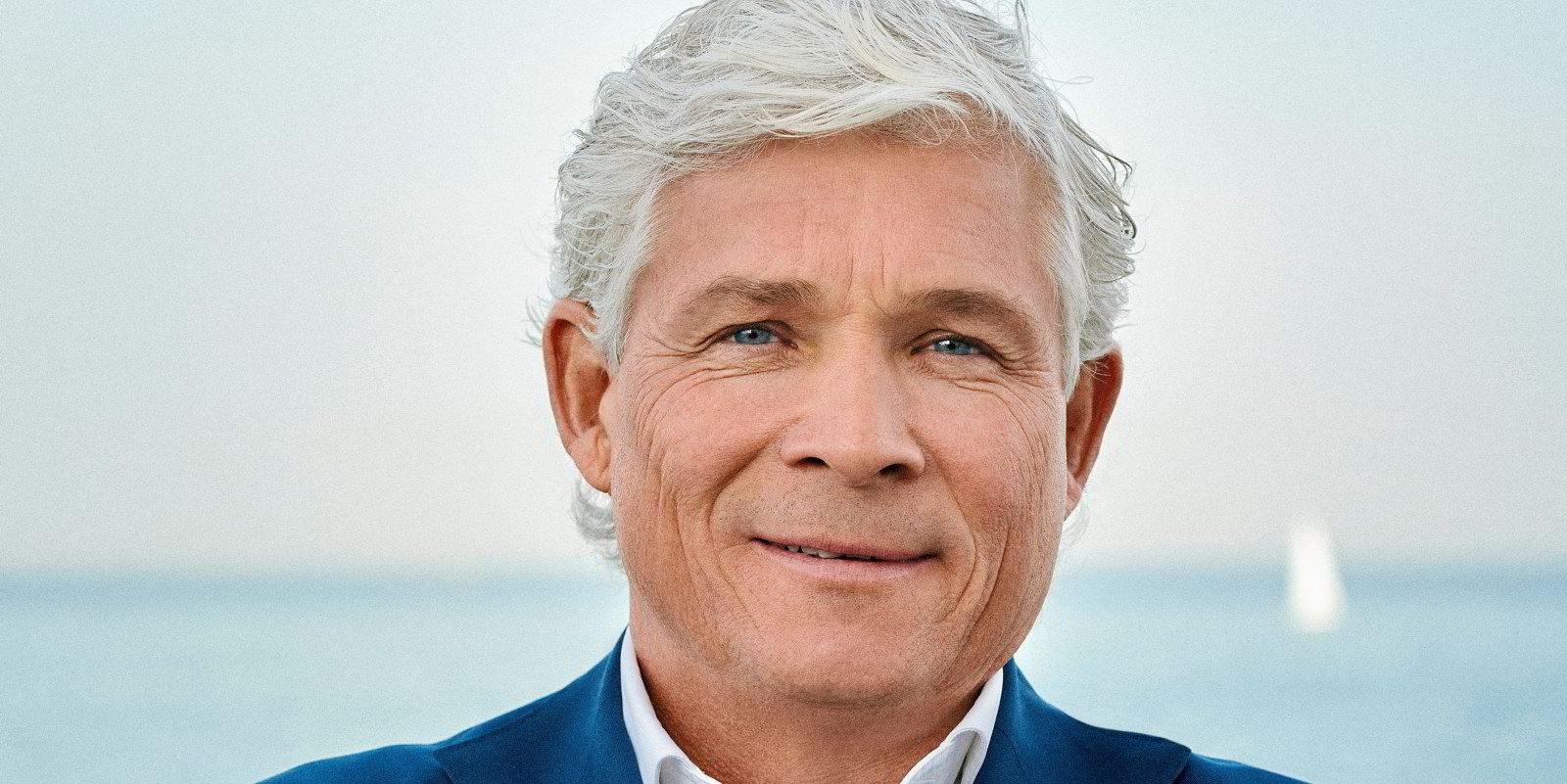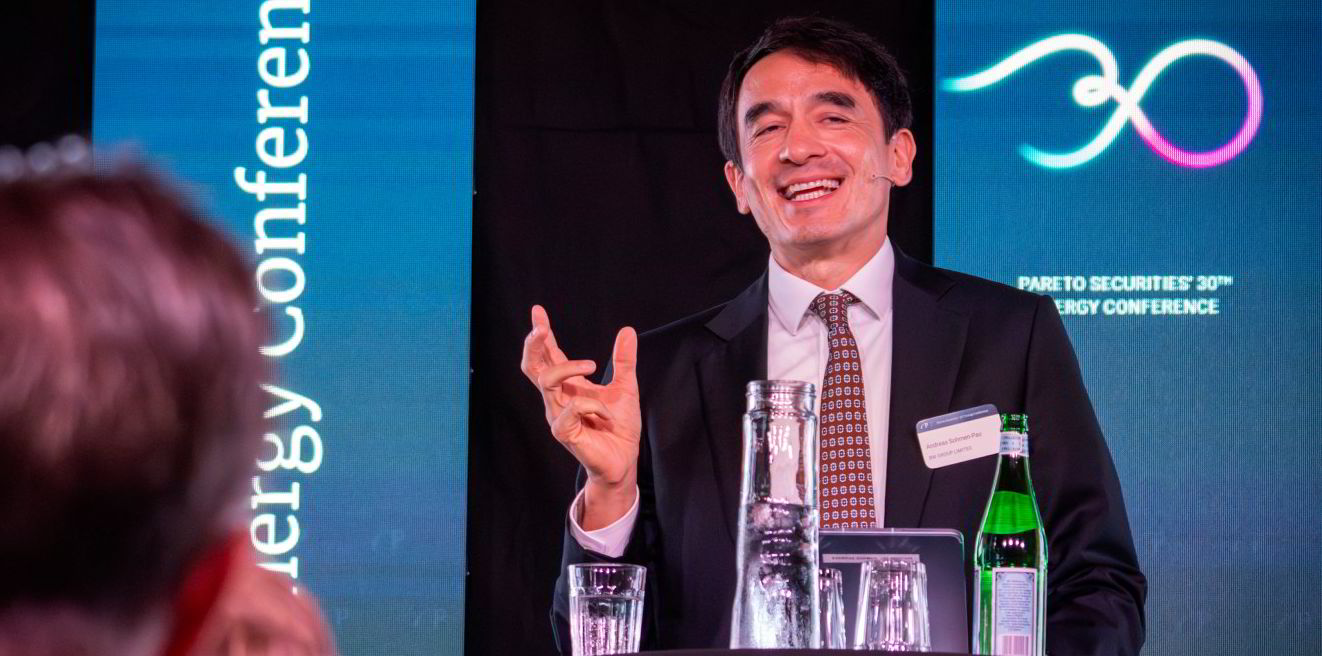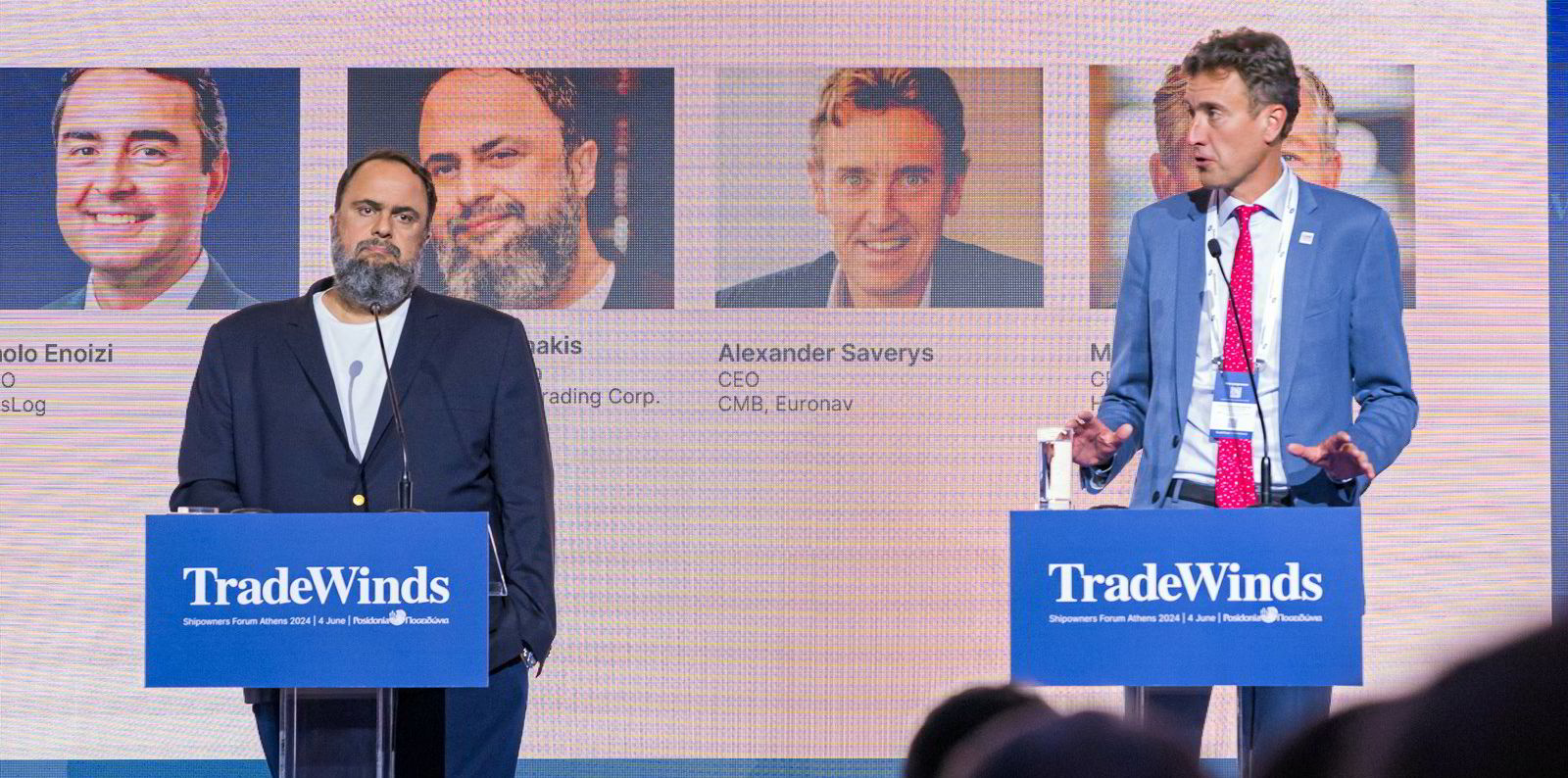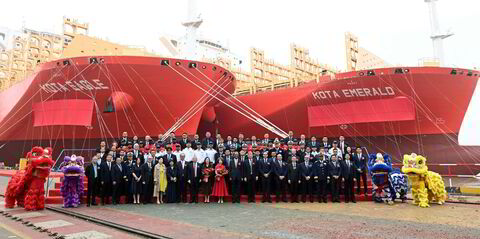Product tanker giant Hafnia — backed by Andreas Sohmen-Pao’s BW Group — has become the first shipping company to openly petition the Oslo Stock Exchange to allow shares to be traded in US dollars.
Its push comes at a time when investors are reducing exposure to the ailing Norwegian kroner and just a few months after Sohmen-Pao publicly criticised the Oslo Stock Exchange for becoming less competitive.
Sohmen-Pao has several listed companies in Oslo, with a combined market capitalisation of over $10bn, including Hafnia, BW LPG, which is the world’s largest VLGC owner, and FPSO specialist BW Offshore.
Both Hafnia and BW LPG have this year sought secondary listings in the US to boost the trading volumes of their stock and broaden their investor base.
Mikael Skov, chief executive of Hafnia, confirmed on the sidelines of the TradeWinds Shipowners Forum at Posidonia in Athens that discussions had taken place with the Oslo Stock Exchange to support trading in US dollars as well as kroner.
“Core shipping, there is no doubt the Norwegian investors have that [shipping knowledge] for generations. I like to be nice to the Norwegians as they have done everything well with us,” Danish executive Skov told the forum.
“The problem is the Norwegian kroner, right? We were struggling a little bit with having a US dollar business all the way through, then suddenly having a share price in Norwegian kroner,” he explained.
“We raised this before, and I think it’s something that should be addressed, that you should be able to have a different currency because, otherwise, it makes it a bit of a challenge to explain.”
Oivind Amundsen, chief executive of the Oslo Stock Exchange, said BW Group has been very interested in a dollar listing and that the exchange had discussed it with the group and Sohmen-Pao several times.

“We are just as interested in a dollar listing and settlement as many of our companies. As of today, we have not been able to set it up in a good enough manner,” he said.
Oslo has historically been a major exchange for shipping globally, famed in the industry for competitive costs, limited red tape and a knowledgeable investor base.
According to data from Clarksons, Oslo is ranked fourth globally for shipping in terms of the number of public companies.
The world’s largest shipbroker counts 40 shipping firms listed in the Norwegian capital. This compares with 58 in Shanghai, 54 in New York, 42 in Hong Kong and 35 in Tokyo.
By fleet capacity, New York is the largest exchange for shipping, with Oslo ranked fifth, in a list that also includes Tokyo, Hong Kong and Shanghai, Clarksons said.
Sohmen-Pao has a long history with the Oslo Stock Exchange, having first made his mark in Norwegian shipping circles as an architect of BW Group’s takeover of Bergesen in 2003.
At the time his target was Norway’s largest shipping company, often described as the crown jewel of the domestic shipping industry.
However, at the flagship Pareto energy and shipping conference last September, Sohmen-Pao warned the Oslo Stock Exchange was losing some of its famed agility following its takeover by Euronext in 2019.
Sohmen-Pao also pointed to the struggles of the Norwegian kroner as a second challenge facing the Oslo capital markets system. He noted the currency had lacked stability despite Norway’s relatively strong economy.
“We are starting to see investors in other parts of the world saying, ‘We don’t want to take so much kroner risk’,” he said during a keynote address at the Pareto event.

Amundsen explained regulatory hurdles presently blocked the trading of stock in Oslo in currencies except the native Norwegian kroner.
He added the exchange was exploring possibilities to facilitate US-dollar trading and hoped changes would make it possible in the future.
Amundsen explained he was not aware of others outside of BW Group who had contacted the exchange to ask for a dollar listing.
TradeWinds has contacted BW Group and invited Sohman-Pao to contribute to this article. Comment has also been sought from BW LPG and its chief executive, Kristian Sorensen.
The kroner has been hammered over a sustained period, weakening almost 20% against the US dollar during the past five years and a staggering 45% during the past 10 years.
While a few investors have attributed the shift to policies, most analysts have pointed to macro effects like interest rate differences.
Amundsen said: “We’ve seen companies wanting a stronger kroner but we haven’t seen any investors flee Norway. The foreign share on the Oslo Stock Exchange is 40%. That’s higher than before Covid.”
One source with experience in the Norwegian and US capital markets, who asked not to be named, said that while opening up US-dollar trading in Oslo would allow companies to skirt exposure to exchange rates, other limitations would remain relative to the US.
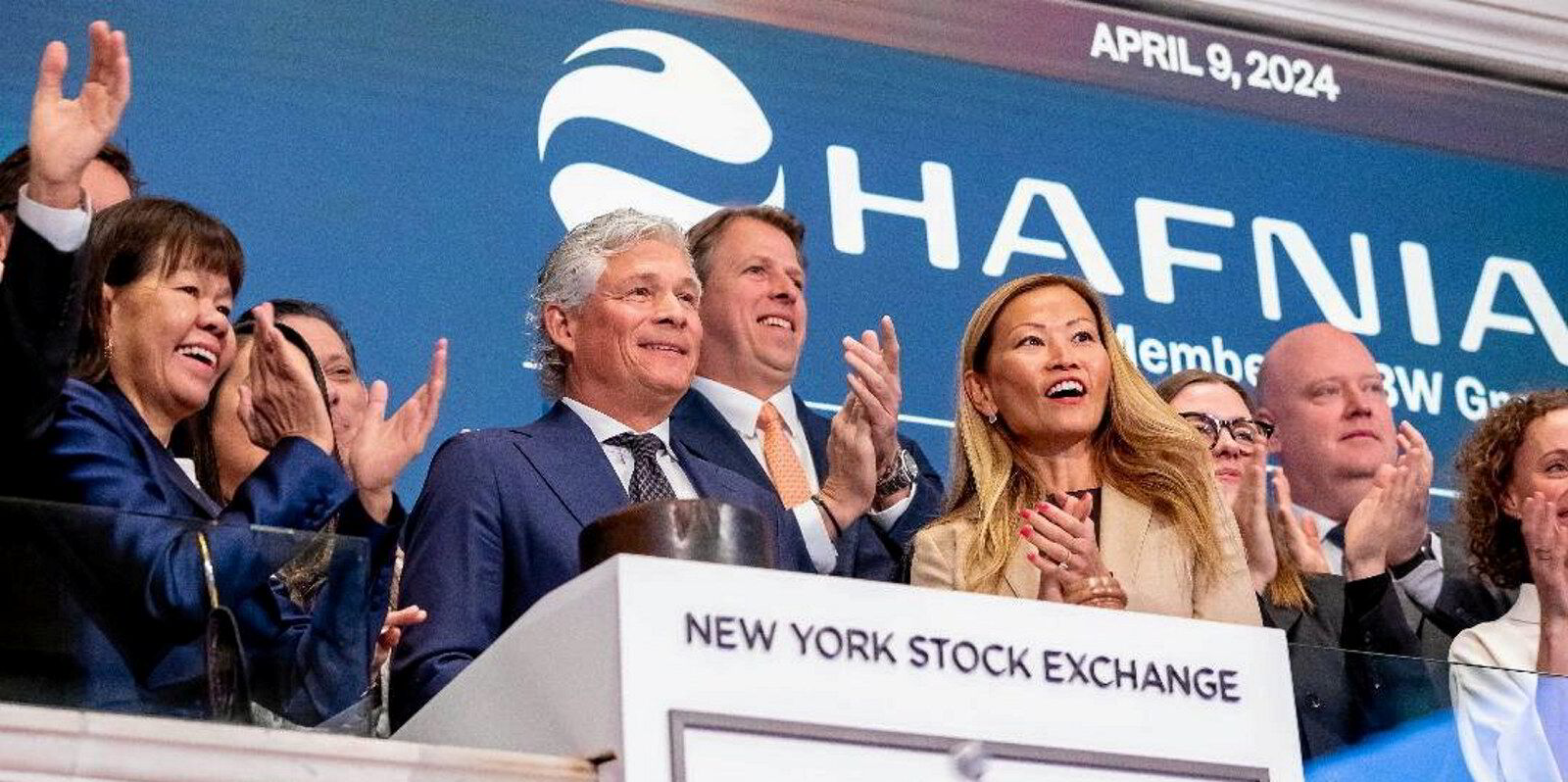
He notes not all funds can invest in Oslo-quoted companies and some preferred a US listing. At the same time, some trading platforms favoured by retail investors do not have access to the Norwegian market today.
“I would consider it [US-dollar trading in Oslo] an improvement. But it would still be beyond the scope of some funds,” the shipping source said.
Anders Onarheim, who retired as BW LPG chief executive last year, said kroner risk is something that is being discussed across the shipping industry and he advised the BW LPG board to seek a dual listing in the US. The process was completed in early 2024.
“We saw that one of our peers was trading with solid volume and at a higher valuation than us,” he said. “When you’re listed in the US, you also get more trading hours each day, which has value in and of itself.”
Onarheim has previously said that international investors did not wish to have kroner exposure.
“We got very clear signals from investors. The reasons are multifaceted, but there’s no doubt that the trust in the kroner and the governance of the country is very low, unfortunately,” he explained.
Onarheim said that BW LPG did not ask the Oslo Stock Exchange if they could allow trading in dollars during his tenure.
“However, maybe it’s something the stock exchange should look into,” he said. “We are not the only company to be told by the investors that the Norwegian kroner is challenging.”
Jonas Christensen and Martin Kværnes are journalists with Norwegian publication Dagens Næringsliv, which, like TradeWinds, is owned by DN Media Group.

